How to soundproof a bathroom - 7 expert tips on soundproofing without sacrificing style
There's no need to broadcast your bathroom activities to the whole household with our soundproofing tips
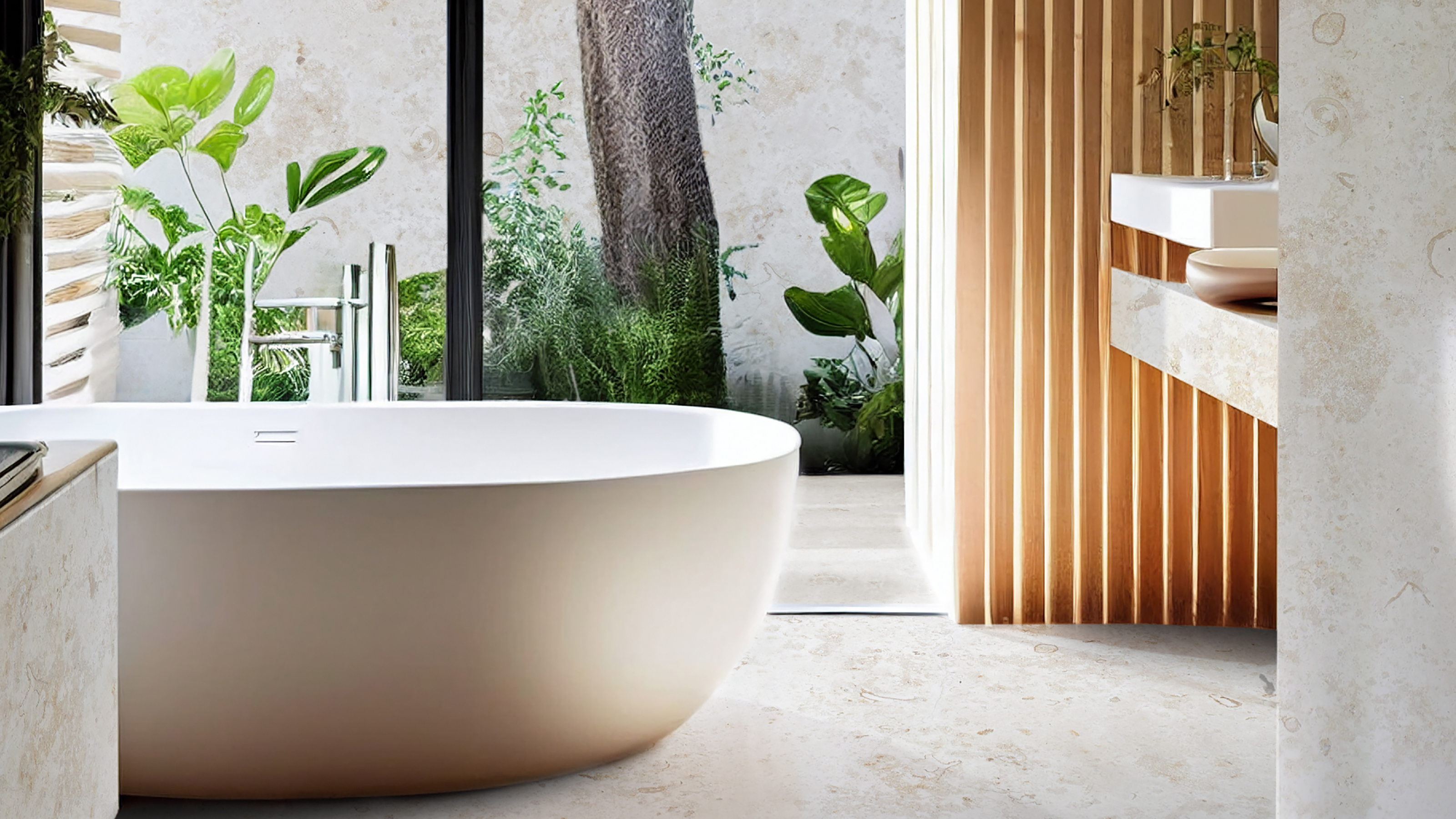

If there is one room in the house that most people would prefer to keep a little private, it has to be the bathroom. As one of the most-used rooms in any house, it also tends to be one of the noisiest and, let’s face it, not all of those noises are ones you want to share with the other members of your household.
Lightweight construction methods, open plan layouts and more powerful bathroom fittings all make it more important than ever for the bathroom ideas you choose to help contain noise, be that the sound of the toilet flushing or your teenager’s questionable choice of music blaring from a portable speaker.
It isn’t just keeping sound within your bathroom that matters though – you also want to keep it out. As a room that should feel like a calming and restorative retreat, the last thing you want when soaking in the tub is to be disturbed by the noise of kids arguing.
With this in mind, we’re here with the very best ways to soundproof a bathroom, from easy quick fixes to methods you can put in place when renovating.
How to soundproof a bathroom
There are lots of different ways to dampen bathroom noises – many of which require only a little time and won’t cost too much either, meaning even those after budget bathroom ideas can include them.
That said, if you are wondering how to plan a bathroom from scratch, perhaps as part of a renovation project, there are some more robust and effective methods you could consider. We've covered both sets here, along with help from some trusted experts.
1. Start with your bathroom door
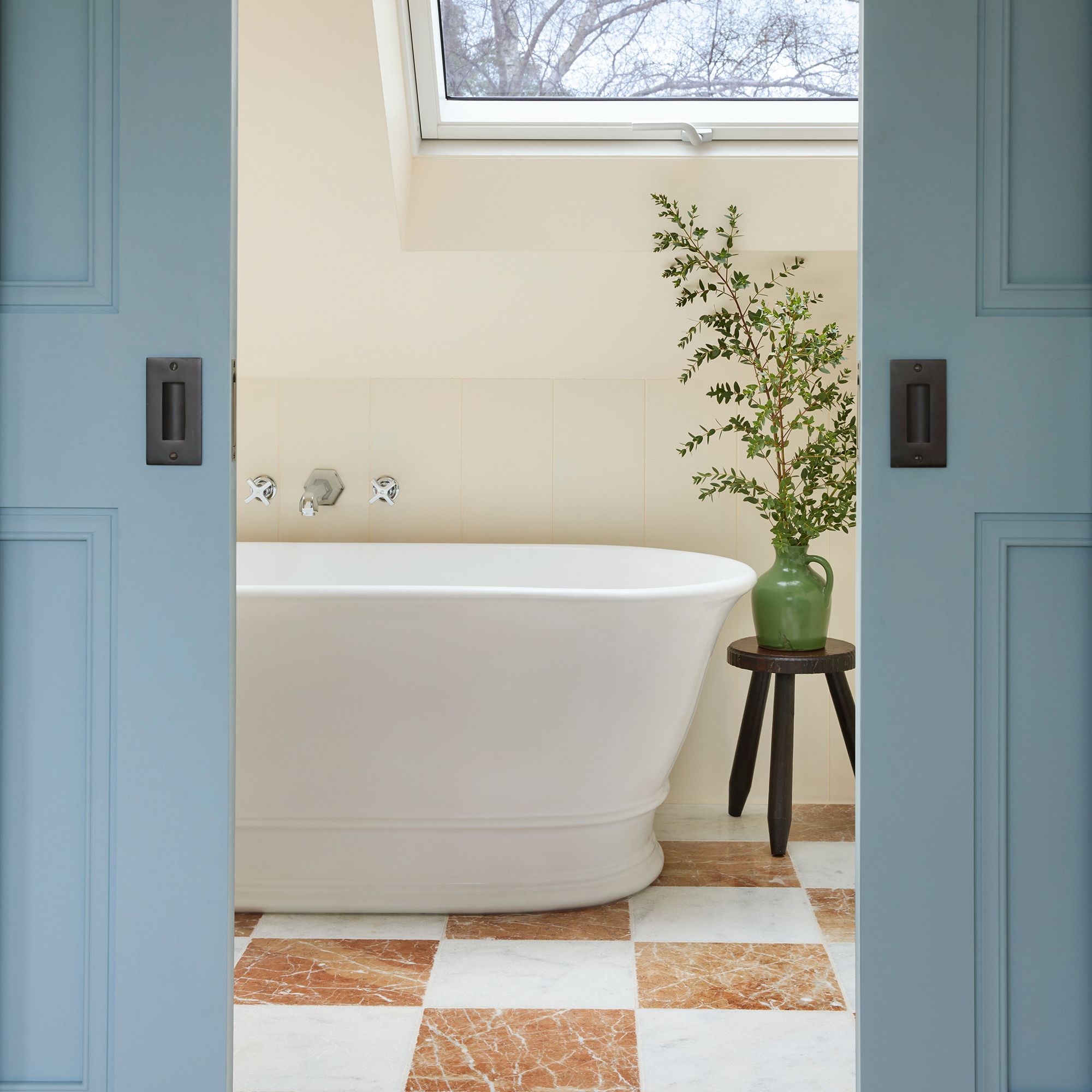
Your bathroom door has more of an effect on how much noise can pass in and out of the room than you might realise.
'Most bathroom doors are hollow-core and offer little in terms of sound insulation,' explains Tyler Hadley director of marketing at DDS Acoustical Specialties. “Replace it with a solid core door.'
Unlike hollow-core doors, solid-core doors are made up from either solid wood or a composite material which gives them more mass, making it much harder for sound to travel between them. Many come in some really sleek designs which would be the perfect match with modern bathroom ideas.
It isn’t just the type of door that can help here though, there are simple upgrades that will help too – most of which revolve around sealing up any gaps.
'Invest in acoustic door seals and weatherstripping to create a tight seal around doors and windows, preventing sound from escaping or entering the bathroom,' advises Jorge Hernandez, head of design at Crosswater.
Try the EVILTO Weather Stripping for Door from Amazon, which will also help keep draughts at bay.
2. Change your bathroom flooring
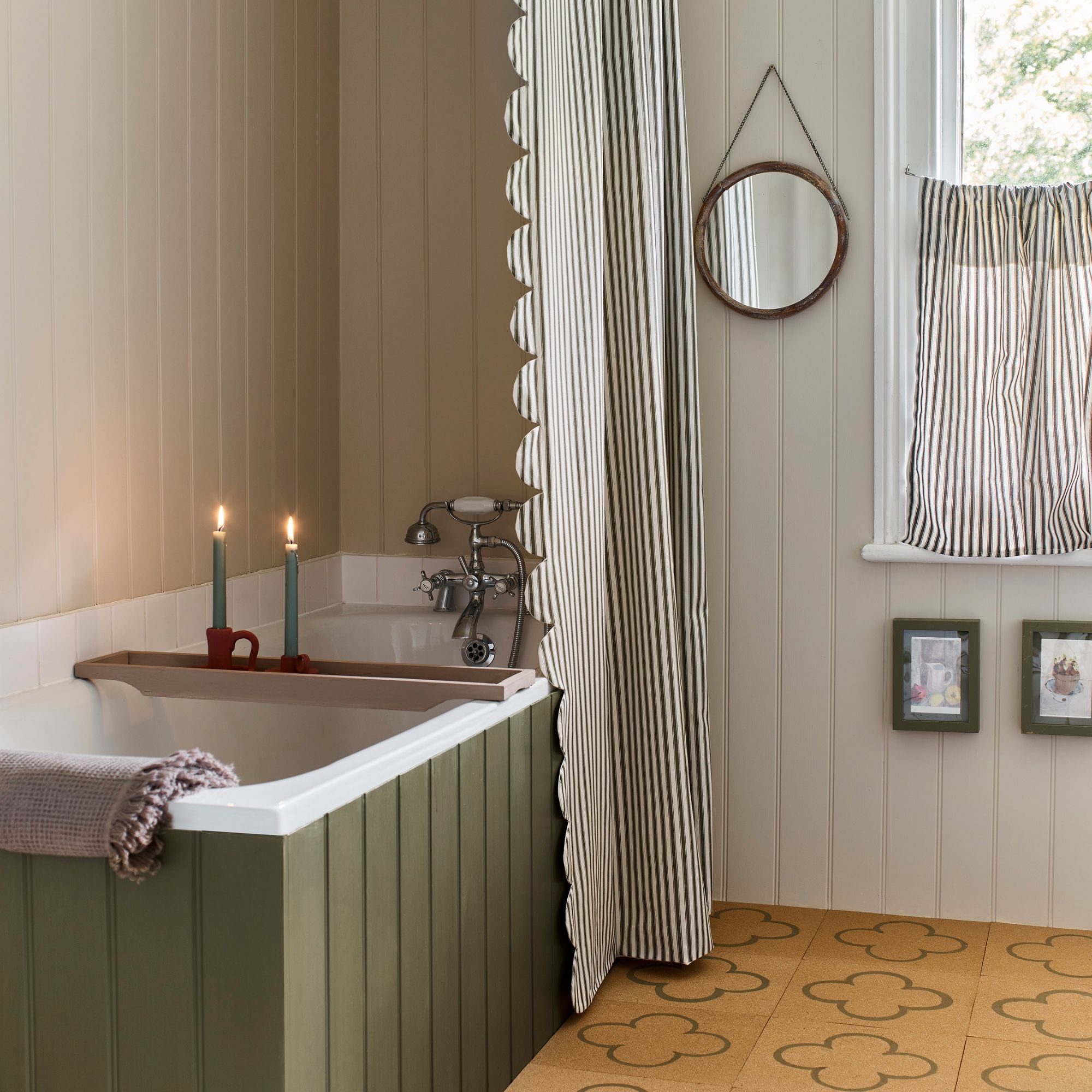
Bathrooms need to be practical spaces that are easy to clean and able to handle high levels of moisture. Tiled floors and walls tick both these boxes, but neither are particularly great at soundproofing – so take time to consider some other bathroom flooring ideas that will do a better job of reducing the impact of the noises produced in this space.
While carpeting a bathroom is definitely not something we’d recommend, for a quick fix you might like to consider investing in a washable, waterproof rug. The Nature Collection from The Rugs, available at Amazon, are suitable for indoor or outdoor use and are water, stain, and fade-resistant.
Alternatively, have a good think about swapping your tiles for another material. Cork tiles not only look great, but they are also anti-microbial, and water-resistant and have both excellent heat and soundproofing properties.
The way your flooring is laid, as well as what sits beneath it, also has a part to play.
'Opt for a floating floor design, where the flooring material is laid over a sound-deadening underlayment,' suggests Tyler Hadley. 'This prevents sound from being easily transferred to the structure below.'
3. Hang acoustic panels on your bathroom walls
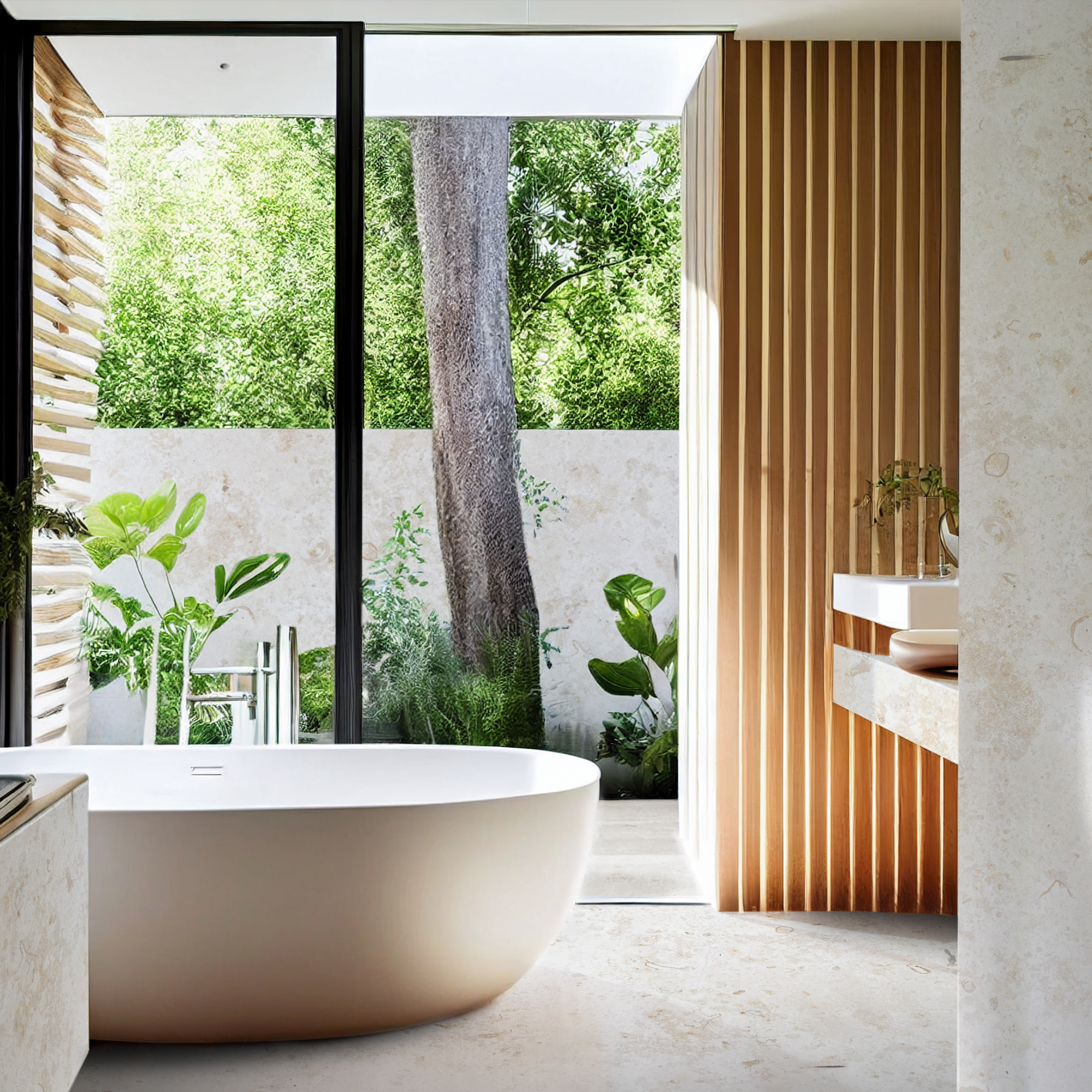
A great solution for anyone after bathroom wall ideas that will also help with noise transfer, acoustic panels can be made from lots of different materials and come in a huge range of patterns and colours, including some that can be arranged to make up murals and designs.
They are designed to absorb sound and reduce echo. If you like the idea, be sure to check that they are water-resistant first as not all are.
The IZODEKOR 3D Acoustic Wall Panels from Amazon are suitable for bathrooms come in a range of colours and finishes.
4. Reduce echoes by upscaling your walls
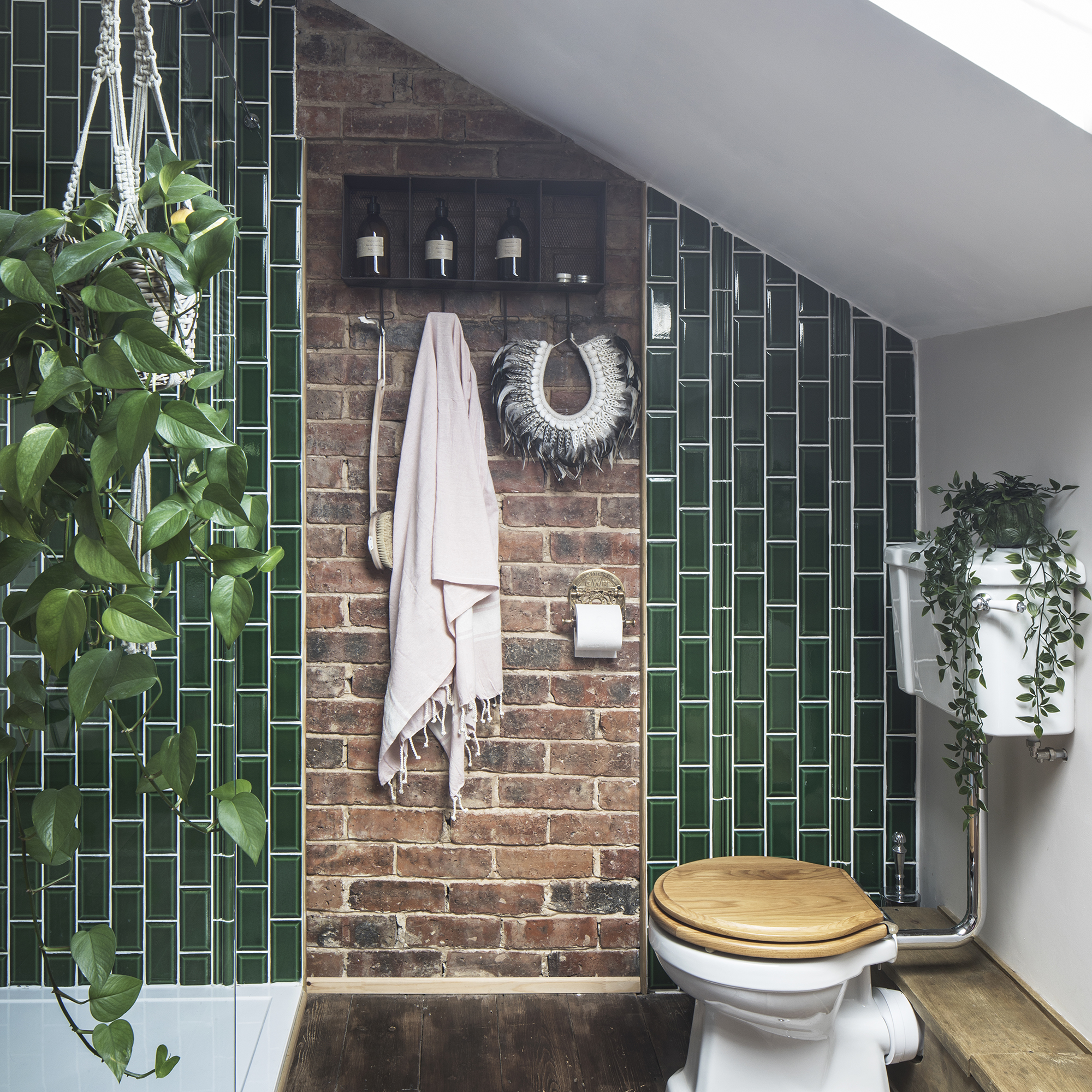
While we’re on the subject of bathroom walls, there are other ways to upgrade their soundproofing credentials – most of which will also add to your bathroom decor ideas too.
Simple touches such as fixing wall shelves and storage racks or even pictures to walls will help reduce echo – and if you use them to store sound-absorbing materials, such as a bunch of fluffy towels, they will be even more effective. A hanging rail holding towels and robes is another great example as is B&Q's 5 Tier Wall Mounted Towel Rack which is designed to hold five rolled-up towels – the perfect practical way to absorb sound.
'Consider incorporating sound-absorbing elements into the bathroom decor, such as plush rugs, thick curtains, or upholstered furniture, to help absorb and reduce noise within the space,' suggests Jorge Hernandez. 'Reach for fabrics such as wool and nylon, these are great in spaces with high humidity, and are durable, making them a great long-term investment.'
If you fancy introducing a bit of greenery into the room too, how about hanging plants from the walls and ceiling? Even this can help reduce echo – plus some plants help reduce mould in bathrooms.

Jorge is passionate about the way design shapes our interaction with the world. He believes designing for the bathroom, a seemingly utilitarian space, is an important necessity that offers the designer plenty of tools to play with including material, colour, and experience
6. Add insulation as part of a bathroom renovation
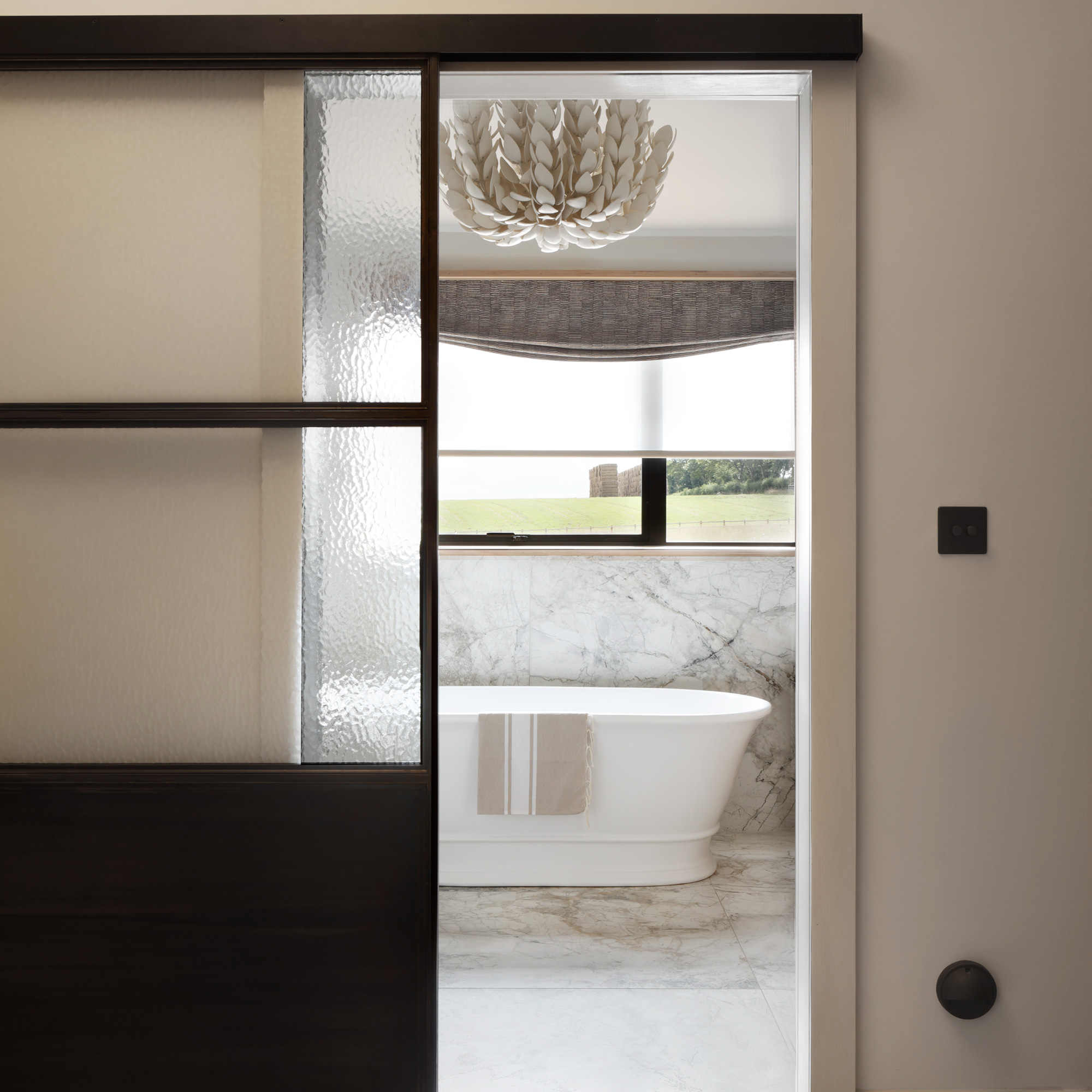
One of the most common bathroom renovation mistakes is not thinking through how to add extra insulation into stripped-back walls to help with warmth and soundproofing.
If you are prepared for a fair bit of mess and disruption, the best way to upgrade the soundproofing qualities of your bathroom is to strip the walls back and add in extra insulation, preferably something that helps block noise. Really what you want to aim for here is to create a 'decoupled' space within your walls by fixing timber battens to the wall with the insulation between.
'Acoustic slabs and rolls are ideal soundproof materials for soundproofing walls. If you really want to go the extra mile, add acoustic plasterboard,' explains Turrou Landesmann, trading manager at Insulation Superstore. 'Having said that, set a budget before you start your project so you don’t break the bank. This enables you to pick the right material for your needs, and the type of wall you’re working with.' Acoustic rolls and acoustic slabs are both good options and if you really want to ensure no sound escapes from your bathroom, add a final layer of acoustic plasterboard too.
'Acoustic plasterboard is like the cherry on the cake for soundproofing,' continues Turrou Landesmann. 'To finish off soundproofing your wall, add a layer of acoustic plasterboard. In some instances, you can use acoustic plasterboard without the need for rolls or slabs. For example, if you can’t afford to lose valuable space.'
Something like Resonate ResoBoard 3 Acoustic Plasterboard from Insulation Superstore does a good job and can be fitted on stud or solid walls.

Turrou Landesmann is trading manager at Insulation Superstore, a company that was launched in 2009 as an online supplier with knowledgeable customer service.
7. Install bathroom speakers
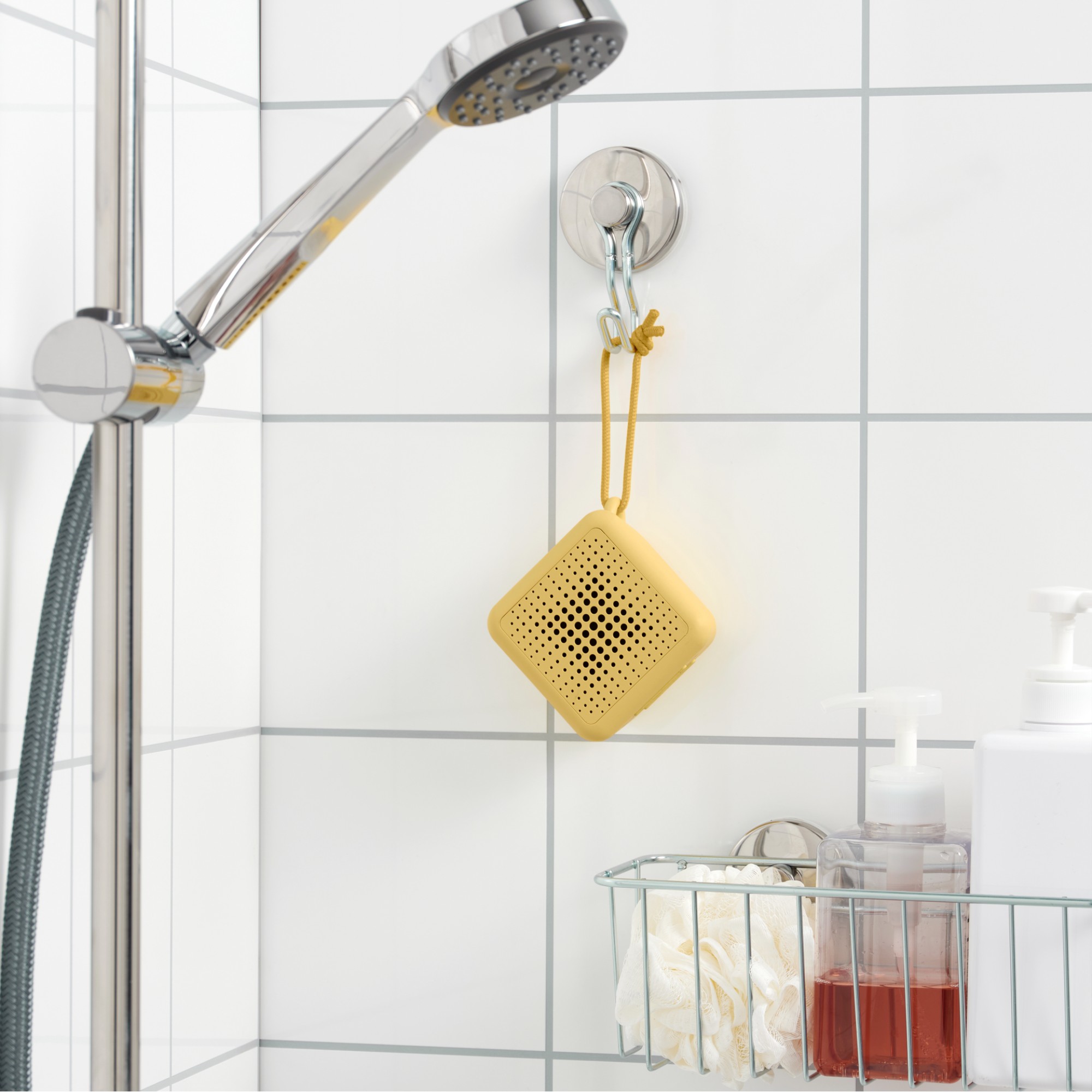
Ok, you might be pretty surprised to be reading this within an article about keeping noise down, but there is method in the madness. By installing some bathroom speakers from which to blast out your favourite tunes or podcasts while enjoying bathroom time, it is far less likely that your activities are going to be broadcast to the rest of the household.
The OYIB Bluetooth Shower Speaker from Amazon not only boasts great sound quailty, but it also comes complete with LED RGB lights that change to the beat of the music.
FAQs
How much does it cost to soundproof a bathroom?
This very much depends on the methods you decide to use. Obviously, if you go down the route of making structural alterations to your bathroom you will be looking at higher costs than someone who chooses the quick fixes.
Simple DIY measures, such as adding self-adhesive soundproofing strips and seals to doors could cost as little as £10 or so using something like this 2 Pack Draft Excluder for Doors from Amazon. However, if you decide to go all-in and tackle soundproofing your walls you are going to be looking at considerably more.
To add acoustic plasterboard with batons to existing wall will cost around £2,600 according to Checkatrade, while they estimate the cost of adding soundproof flooring to be on average £2,000 for a 10m2 room.
How do you make a bathroom feel more homey?
You shouldn’t feel that putting practical measures in place in your bathroom has to mean sacrificing a homey, warm feel. In fact, many soundproofing methods can actually help with a cosy feeling.
Cork flooring, for example, is not only soft underfoot, but it also brings with it a visual warmth that it can be hard to achieve with polished tiles.
Using wall panelling ideas in the bathroom can also add a sense of character – plus, fitting panelling to the walls adds another sound barrier. This Shaker Style Wall Panelling Complete Kit from Amazon is a cinch to fit on a DIY basis.
See your bathroom soundproofing as an opportunity to inject warmth, not take it away – shelves full of bouncy towels, plenty of moisture-loving plants, and decorative shower panels will all help create a snug atmosphere at the same time as reducing noise transfer.
Get the Ideal Home Newsletter
Sign up to our newsletter for style and decor inspiration, house makeovers, project advice and more.

Natasha has been writing about everything homes and interiors related for over 20 years and, in that time, has covered absolutely everything, from knocking down walls and digging up old floors to the latest kitchen and bathroom trends. As well as carrying out the role of Associate Content Editor for Homebuilding & Renovating for many years, she has completely renovated several old houses of her own on a DIY basis.
-
 Wood drenching is the calming new twist on the colour drenching trend – here’s how to make the look work in your home
Wood drenching is the calming new twist on the colour drenching trend – here’s how to make the look work in your homeIt’s easier than ever to embrace natural materials
By Maddie Balcombe
-
 Aldi is launching a £200 day bed with four different features - its sleek design is suited to the whole family
Aldi is launching a £200 day bed with four different features - its sleek design is suited to the whole familyYou don't want to miss out on this Specialbuy
By Kezia Reynolds
-
 How to set up a drip watering system that saves water and a lot of effort
How to set up a drip watering system that saves water and a lot of effortKeep your plants hydrated (and your water bill down) with this clever garden watering solution
By Natalie Osborn